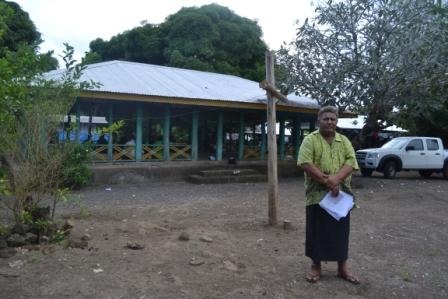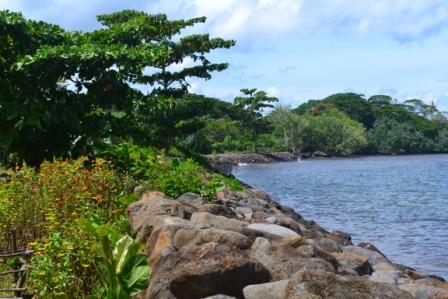
Climate Change Resilience
Tafitoala village located south of Upolu, Samoa has over the years witnessed the slow erosion of their coastline forcing a number of its families to relocate plantations and houses further inland.
55 year old Mr Pepe Utai lives with his family and has seen evidence of unpredictably strong waves hit their shores during high tides.
"Over the past 50 or so years I have seen our coastline erode to about 50 metres and it has caused problems to our houses as well as our plants," said Utai.
He adds that he is happy with the integrated coastal protection measures undertaken by the Pacific Adaptation to Climate Change (PACC) Project to cushion these impacts.

Pictured: Mr Pepe Utai
"With the seawall now in place, it makes a big difference because the village is now secure and safe from the waves as now the waves cannot reach the main road, the houses and our plants," added Utai.
PACC Samoa is helping communities integrate coastal community defense and erosion control under climate risk considerations.
PACC National Coordinator Ms Moira Faletutulu said that the seawall that is still within its 12 month trial period is only part of the integrated coastal protection measure.
The project has also initiated with the communities a replanting of native coastal plant species to add strength to the seawall infrastructure and further stabilise the coastline.
"After putting in place the infrastructure, we have also done the first round of the replanting programmes for the communities; an initiative that is being sustained through our Forestry Division."
On the ground implementation started with Vulnerability and Adaptation Assessments, and Socioeconomic Assessments to help the project identify 20 to 30 year old problems in relation to climate change that people were facing and how they have been coping with the impacts.
Villagers have moved plantations inland due to soil salinity, rise in sea level and flooding from storm surges. They reported waves have become unpredictably high since the early 90's, making it look like a King Tide season during high tides.
The design of the coastal defence and erosion control put in place by the project takes into account climate change projects of approximately 20 years.

The seawall has an extended seven metre backfield scouring material from the existing coastline and fabric to stabilise the field, and has in place specified sized boulders.
The seven meter backfield provides enough room to put in natural buffer zones such as the replanting of native coastal plant species to further support the seawall infrastructure.
Similar work is still continuing on the ground in other PACC pilot areas in Samoa.
The PACC Project consists of 14 member countries; it is implemented by the United Nations Development Programme (UNDP) in partnership with the Secretariat of the Pacific Regional Environment Programme (SPREP).
It is funded by the Global Environment Facility (GEF) and the Australian Agency for International Development with support from United Nations Institute for Training and Research (UNITAR) Climate Change Capacity Development (C3D+) Programme.